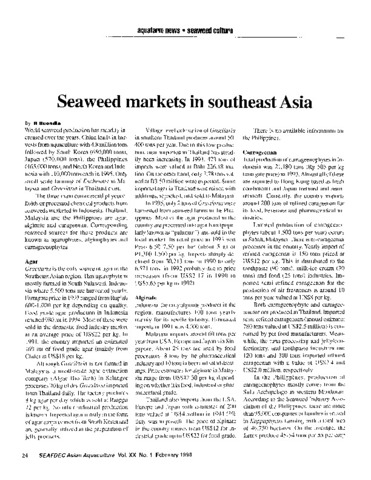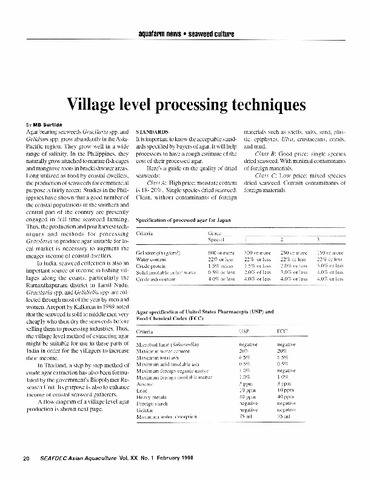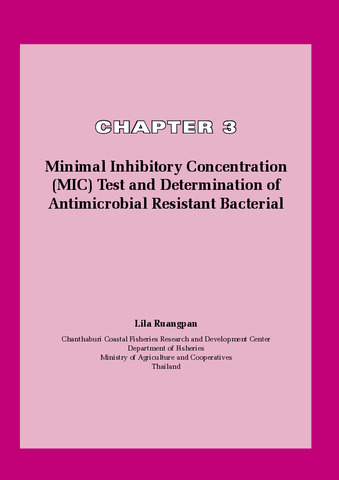Solar irradiation as an alternative bleaching process for agar extracted from Gracilariopsis heteroclada in Iloilo, Philippines
- Global styles
- MLA
- Vancouver
- Elsevier - Harvard
- APA
- Help

View/
Date
2019-07-30Page views
1,602ASFA keyword
Taxonomic term
Metadata
Show full item record
Share
Abstract
The current industrial practice of using chemical bleach to achieve the pure white colour of agar is deleterious to both human and environmental health. This study evaluates the potential of solar irradiation as an alternative bleaching process for agar extracted from Gracilariopsis heteroclada in Iloilo, Philippines. The physico-chemical properties of agar obtained from alkaline-treated seaweed after exposure to different bleaching conditions (e.g. solar irradiation, hypochlorite solution, and ultraviolet and fluorescent lights) were examined and compared with commercial bacteriological agar. Photobleaching through solar irradiation produced agar with superior gel strength (1038.61 g cm−2), high 3,6-anhydrogalactose content (41.44%) and low total inorganic sulphate content (1.87%) without compromising agar yield (19.37%). Solar irradiation offers very promising results as a simple, low-cost, environmentally friendly alternative to the chlorine bleaching process for agar extraction.
Suggested Citation
Endoma, L. F., Nacional, L. M., & Luhan, M. R. J. (2019). Solar irradiation as an alternative bleaching process for agar extracted from Gracilariopsis heteroclada in Iloilo, Philippines. Botanica Marina , 62(6), 605-613. https://doi.org/10.1515/bot-2018-0120
Type
ArticleISSN
0006-8055; 1437-4323Collections
- Journal Articles [1258]
Related items
Showing items related by title, author, creator and subject.
-
Seaweed markets in southeast Asia
Buendia, R. (Aquaculture Department, Southeast Asian Fisheries Development Center, 1998)World seaweed production has steadily increased over the years. The 3 main commercial phycocolloids or processed chemical products from seaweeds marketed in Indonesia, Thailand, Malaysia and the Philippines are agar, ... -
Village level processing techniques
Surtida, M. B. (Aquaculture Department, Southeast Asian Fisheries Development Center, 1998)The agar-bearing seaweeds Gracilaria and Gelidium grow abundantly in the Asia-Pacific region. Production and post-harvest techniques and methods for processing Gracilaria to produce agar suitable for local market is necessary ... -
Minimal inhibitory concentration (MIC) test and determination of antimicrobial resistant bacteria
Ruangpan, Lila (Aquaculture Department, Southeast Asian Fisheries Development Center, 2004)The agar dilution technique is used to measure qualitatively the in vitro activity of an antimicrobial agent against the test bacteria. In this method, graded amounts of antibiotics are incorporated in agar plates and ...





